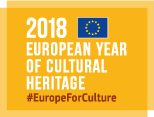Scan4Reco - Multi-layer digitization of CH Assets for 3D Printing enhanced conservation based on spatiotemporal Simulation & Decision making support
Challenge: WHY the innovation has been developed? What problem is addressed and why has not been not solved before?
The European CH is enormous including a vast and rich variety of cultural items, ranging from works of art and archaeological findings to buildings and historical monuments. The need to preserve and to provide wide access to cultural heritage is clearly of utmost importance, as cultural heritage plays essential role in building up the identity of future generations by educating about their past. A crucial issue in the field of CH is thus, the effective documentation of CH items, in terms of their state and condition for prevention & prediction against potential harmful environmental effects. This information needs to become easily accessible to relevant stakeholders towards the stimulation of research and the selection of indicated methodologies for education & restoration/conservation. To this end, the potential to perform automated investigation in-situ, enhanced with augmented visualizations & 3D printed replicas of high accuracy.
Solution: WHAT the solution is about? HOW it goes beyond the state of the art?
Scan4Reco innovation is a cost-effective, modular and extendable portable device, easy to use - thanks to a motorized mechanical arm - for advanced 3D modelling, predictive simulation and documentation of CH objects, targeting to improve their conservation. In particular, the system is based on a modular platform for non-destructive diagnosis of CH objects, based on hierarchical scanning of the surface and the underlying substrates. Smart algorithms for material identification and unfolding of the stratigraphy aiming at the production of digital 3D reconstructions, that can efficiently simulate the past and future states of the object itself, through dedicated material models. The Scan4Reco solution goes beyond state of the art regarding the following technologies: -The integrated solution is build around a dedicated robotic arm that enhances the accuracy and the repeatability of multispectral scanning. - It combines non-destructive & automatically annotated 3D reconstruction - It provides a bidirectional ageing simulation for forward (i.e. future) and backward (i.e. past) simulation It improves the public accessibility to rare & valuable CH items through VR Museums & 3D printing
End-users and examples of uses: WHO will beneficiate/ is beneficiating from the solution? WHERE and HOW the solution has been adopted? How will impact people or end-users? Add as more as possible examples of market and society uptakes
A wide range of relevant stakeholders (incl. scientists, archaeologists, historians, art restorers, IT scientists and 3D designers, etc.) will benefit from approaching CH objects from a novel point of view: interacting with the object in present, adding information about its past, while at the same time will study the future restoration needs and act accordingly. Apart from helping museums boosting their content’s dissemination capacity & attract new audiences to physically visit them, the Scan4Reco innovation will also provide them with the means to maintain influxes at properly balanced levels to cater for potential environmental issues, by providing interested audiences with VR tours within the CH site. The impact in social dimensions becomes evident, by considering the envisaged advances in both the diffusion channels of CH across diverse parts of the community and in researchers’ cultural heritage content conservation and restoration capacity. Last but not least, the Scan4Reco innovation also significantly leverages the educational opportunities for all ages by promoting dialogue between different cultures and generations.
Future possibilities: Future market perspectives when the innovation will be fully available or in use
Scan4Reco aims to strongly facilitate efforts to bring CH back to the stakeholders community, by giving access to all people who want to closely observe and study a CH object on their schedule. It involves the establishment of an interoperable platform among a cross-disciplinary network of registered professional historians and conservator or restorers, so as to keep information up to date and to overcome ambiguous states and enhance imperfect data. Scan4Reco provides a low cost solution to Museums and Galleries, in order to make the conservation procedures more accessible and effortless. Universities and Research Institutions will enhance existing research activities such as evaluation and restoration of cultural heritage objects, 3D modelling and information of art objects by take advantage of the Scan4Reco developed technologies. Finally, the modular solution will allow scientists to employ only the modules of the solution that are necessary given their requirements, not only regarding the level of detail of the digital representation, but also in respect to the content’s specificities, giving the chance of introducing the Scan4Reco technologies in the industrial space sector.
Media coverage
• A short interview of the project coordinator, Dr. Dimitrios Tzovaras and his colleague Dr. Anastasios Drosou, regarding the scopes of the project, the motivation behind it and its achievements so far, was hosted by Huffington Post Greece. • A short interview of the Greek & German partners of the project's consortium, regarding the scopes of Scan4Reco, the motivation behind it and its achievements, was hosted by Deutsch Welle. • Scan4Reco Project had a TV appearance on RAI, the Italian government broadcasting agency. It has been broadcasted on the educational channel "RAI scuola" and later on the RAI3 channel. Following is the link to the video from the "RAI Scuola" channel`s website.
References for more information (eg. website, social media)
Contacts:
Anastasios Drosou (drosou@iti.gr)
Application sectors:
- Historical sites
- Restoration and conservation of CH
- Tourism economy and impacts
- Circular models for CH
- Environmental sustainability and energy efficiency
- Heritage communities and participatory approach
- Enabling digital technologies for CH
Objectives:
- Market/business development
- Supporting environment (Infrastructures, intermediaires, new business opportunities)
- Knowledge sharing and education
RRI Dimensions:
- Science Education
Communities:
- Heritage at risk
- Shared management of cultural heritage
- Advanced future technologies for heritage and arts

